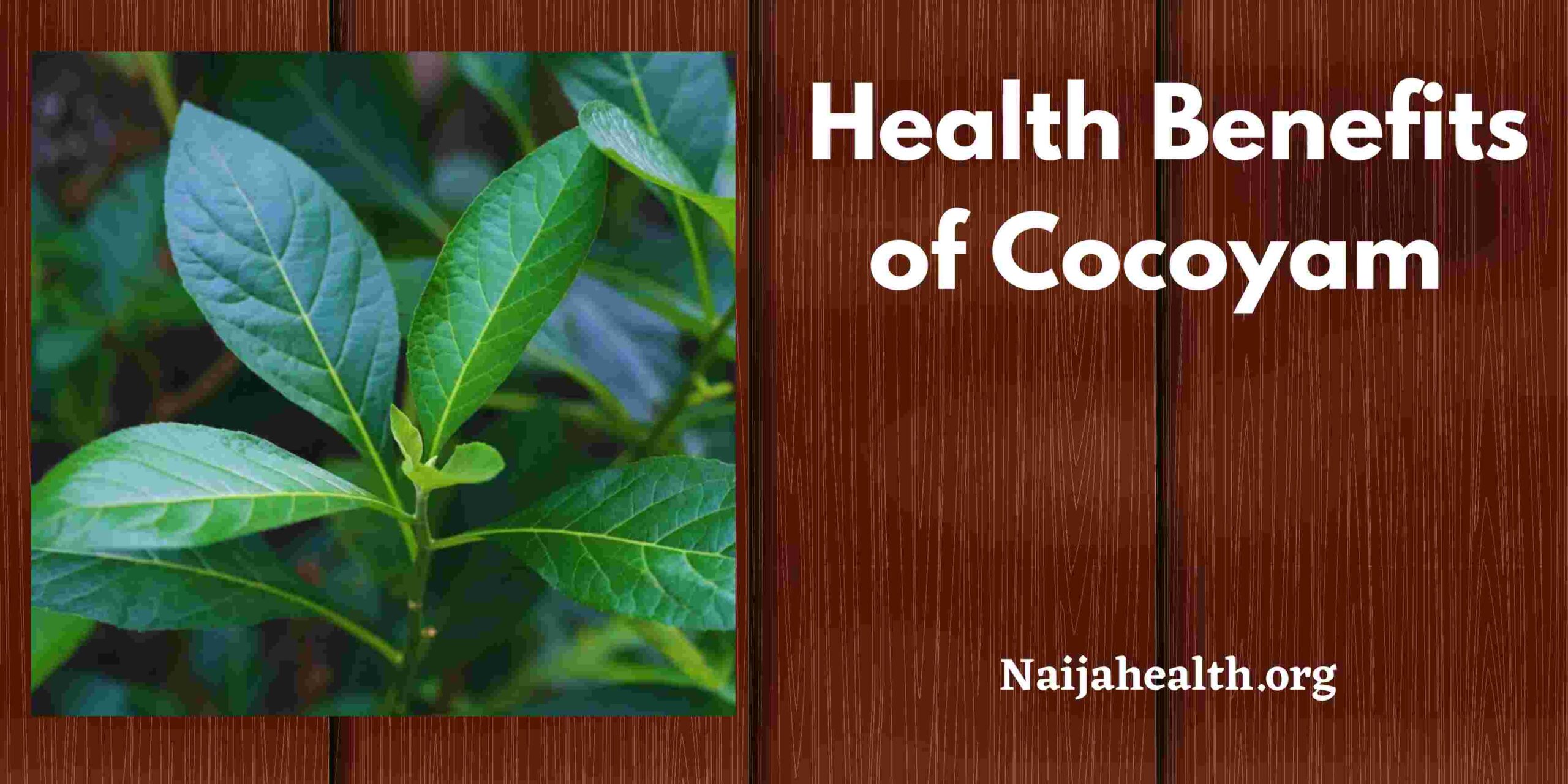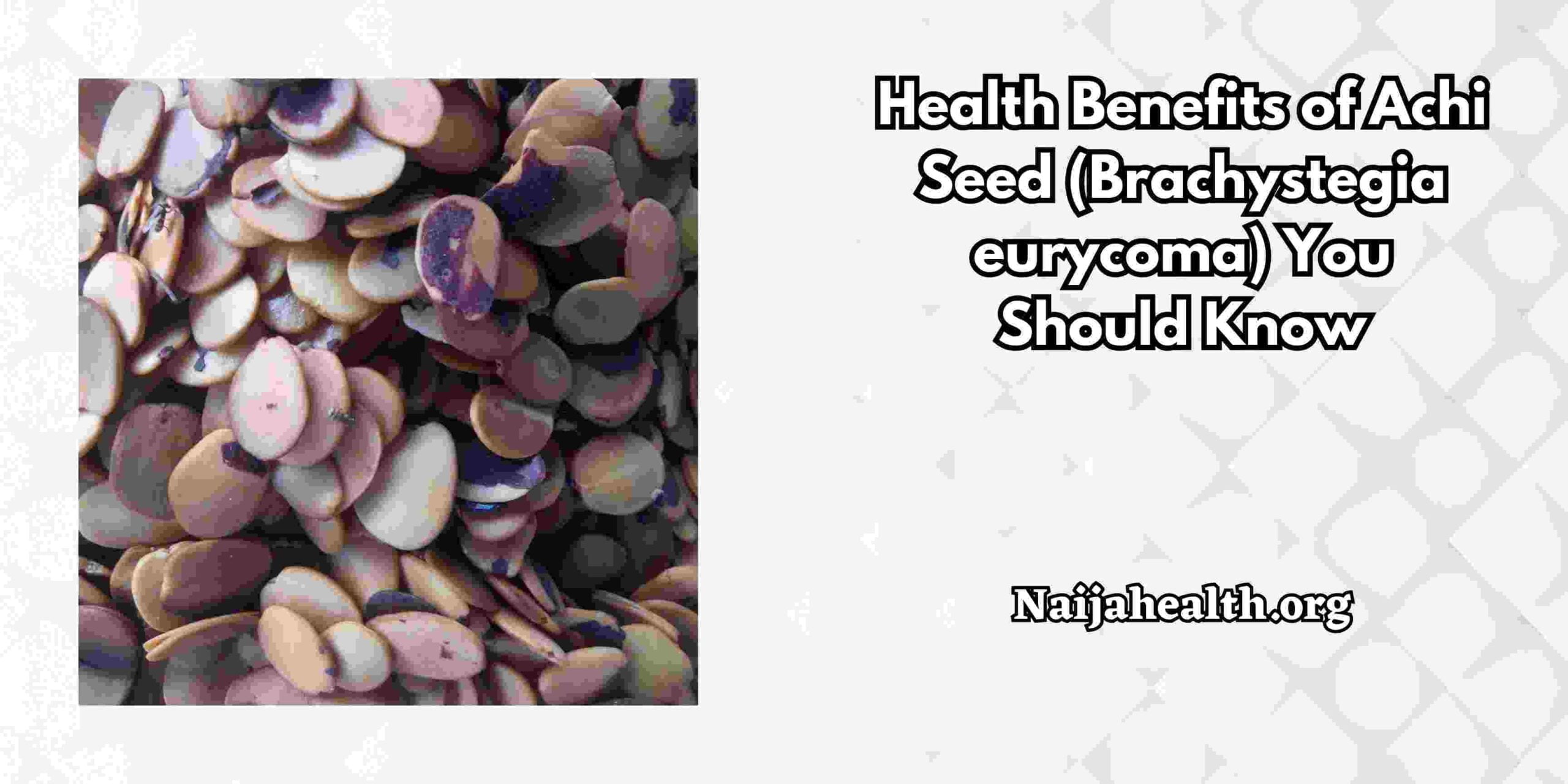Health benefits of cocoyam
Cocoyam is a starchy plant that has been cultivated for thousands of years in many tropical and subtropical regions of the world. In addition to its culinary uses, cocoyam is very nutritious and has been shown to offer a number of health benefits.
In this article, we will explore the nutritional value of cocoyam, as well as its potential benefits for blood sugar regulation, weight loss, digestion, heart health, and cancer prevention. We will also provide you with delicious and healthy recipes to help you incorporate cocoyams into your diet.
Nutritional value of Cocoyam
Cocoyams are a good source of several important vitamins and minerals, including:
- Vitamin C
Helps support a healthy immune system and plays a role in collagen production.
- Potassium
Helps regulate blood pressure and supports healthy muscle function.
- Fiber
Helps promote satiety and supports digestive health.
- Calcium
Helps maintain strong bones and teeth. Cocoyams are also relatively low in calories and fat, making it a great choice for weight control.
Compared to other starchy vegetables like potatoes and sweet potatoes, the cocoyam has a lower glycemic index, which means it doesn’t cause a spike in blood sugar.
Health Benefits of cocoyam
Cocoyams not only add flavor and texture to recipes, but they also offer many health benefits. Filled with essential nutrients, it can contribute to overall health.
Let’s explore some notable health benefits of cocoyam:
- Regulate blood sugar
Cocoyam has a low glycemic index, which means it raises blood sugar more slowly than foods with a high glycemic index.
This quality makes coconut yam suitable for people with diabetes or those who want to control their blood sugar.
Studies have shown that incorporating coconut yams into the diet can help lower fasting blood sugar in people with type 2 diabetes.
- Weight management
Cocoyams are a great addition to a weight loss or weight control diet due to their high fiber content and relatively low calorie count.
The fiber in coconut yams promotes satiety, helps you feel fuller for longer, and potentially reduces overall calorie intake.
Plus, its low fat content makes it a healthy choice for those looking to achieve or maintain a healthy weight.
- Digestive health
The fiber content of coconut yam plays an important role in maintaining a healthy digestive system.
Fiber adds bulk to the stool, making bowel movements more regular and preventing constipation. Additionally, coconut yam contains resistant starch, a type of fiber that acts as a prebiotic, feeding the beneficial bacteria in the gut and supporting a healthy gut microbiome.
- Heart health
Cocoyam contributes to heart health in many ways. The potassium content in cocoyam helps regulate blood pressure levels, potentially reducing the risk of hypertension and cardiovascular disease.
In addition, the fiber content of cocoyam can help control cholesterol levels by binding to cholesterol in the digestive system and promoting its excretion.
- Cancer prevention
Cocoyam contains many antioxidants that help protect the body against oxidative stress and free radicals.
Antioxidants play an important role in neutralizing harmful molecules that can damage cells and contribute to the development of chronic diseases, including cancer.
Several studies have shown that cocoyams, especially polysaccharides and other bioactive compounds, may have anti-cancer properties. However, more research is needed to fully understand and confirm these effects.
Cocoyam Recipes
Coco yam is a versatile root vegetable that can be used in a variety of recipes, adding a unique flavor and texture to dishes. Whether you prefer traditional, modern, vegan or gluten-free recipes, coconut yams can be incorporated into a variety of culinary creations.
Here are some delicious and inspiring cocoyam recipes to try:
Traditional recipes
- Taro chips
Thinly slice yam and fry or bake until crisp. Sprinkle with salt or your favorite seasoning for a delicious snack.
- Poi
A traditional Hawaiian dish made by mashing cooked cocoyams until smooth and creamy. It can be enjoyed as a side dish or used for dipping.
Modern trick
- Creamy Cocoyam soup
Cook diced cocoyams in vegetable broth until tender, then stir until smooth. Add coconut milk, spices and herbs for a pleasant and rich soup.
- Cocoyam and vegetable stir-fry
Cut the cocoyam into thin strips and servé with a variety of colorful vegetables, such as bell peppers, broccoli, and peas. Season with soy sauce and seasoning for a delicious and healthy dish.
- Cocoyam and coconut milk smoothie
Mix cooked and chilled coco yam with coconut milk, a ripe banana, and a sprinkle of cinnamon for a creamy and nutritious smoothie.
Vegetarian and vegan recipes:
- Cocoyam and lentil curry
Simmer the cocoyam and red lentils in a fragrant curry sauce made of coconut milk, tomatoes, and spices. Serve on steamed rice or with naan bread.
- Coco Yam and Chickpea Pancakes
Mash cooked cocoyams and mix with mashed chickpeas, breadcrumbs, herbs and spices. Form into pieces and fry until golden brown. Enjoy it as a delicious veggie burger or as a high-protein snack.
- Coco Yam and Vegetable Gratin
Layer of sliced cocoyam, mixed vegetables and creamy sauce made with coconut milk and nutritional yeast. Bake until golden brown and bubbly for a satisfying and healthy casserole.
Gluten-free recipes
- Cocoyam and coconut flour pancake
Combine cocoyam with coconut flour, eggs, and a bit of sweetener. Cook on plancha for fluffy, gluten-free cakes. Serve with your favorite toppings, such as fresh fruit or maple syrup.
- Cocoyam and almond flour muffins
Mix the cooked cocoyams with the almond flour, eggs, and a dash of vanilla. Add your choice of mixes like nuts, dried fruit, or chocolate chips. Bake into muffins for a nutritious, gluten-free breakfast or snack.
- Cocoyam and quinoa salad
Toss cooked and chilled cocoyams with cooked quinoa, diced vegetables, herbs, and aromatic sauce. Customize with your favorite ingredients like cherry tomatoes, cucumber, avocado and some lime juice.
Growing and Harvesting Cocoyams
- Coco yam is a tropical plant that thrives in hot and humid climates.
- It is usually grown from small portions of bulbs, or roots, planted in well-drained soil.
- Cocoyam plants need a lot of water and should be fertilized regularly.
- Cocoyams are usually harvested when the leaves begin to yellow and wilt.
Culinary uses of Coco Yam in different cultures
- Cocoyams are a staple food in many cultures around the world, including the Pacific Islands, Southeast Asia, West Africa, and the Caribbean.
- In Hawaii, cocoyams are traditionally used to make poi, a dish made from grated and fermented cocoyams.
- In West Africa, cocoyams are a common ingredient in stews and soups, such as egusi and oxtail soup.
- In the Caribbean, cocoyams are often boiled and eaten with salted fish or used to make fried dishes.
Prepare and cook Coco Yam:
- Cocoyam should be peeled and washed thoroughly before cooking.
- It can be boiled, steamed, fried or baked, depending on the desired texture and flavor.
- Cocoyams can also be used to make gluten-free flour, which can be used in baking.
- When cooking with cocoyam, it should be noted that yams contain calcium oxalate crystals, which can cause an itchy sensation in the mouth and throat if not cooked thoroughly. To avoid this, it is recommended to boil the yams for at least 15-20 minutes before eating.
Storage and preservation of Cocoyam
- Fresh cocoyam should be stored in a cool, dry place and used within a few days of purchase.
- Cooked cocoyam can be stored in an airtight container in the refrigerator for up to a week.
- Cocoyam can also be frozen for later use. To freeze, simply peel and slice a coconut sweet potato, blanch in boiling water for 2-3 minutes, then transfer to a freezer-safe container.
FAQs
What is cocoyam?
Coco yam is a starchy root vegetable native to West Africa. It is also known as taro or dasheen and is a staple food in many tropical regions of the world.
What are the health benefits of cocoyam?
Coco yam is a rich source of fiber, vitamins and minerals. It can help regulate blood sugar, aid weight loss, support heart health, boost the immune system, and reduce inflammation in the body.
Is cocoyam gluten free?
Yes, cocoyams are naturally gluten-free and can replace flour in many recipes.
How do you prepare yams for cooking?
To prepare yams for cooking, first peel off the outer skin with a sharp knife or vegetable peeler. Then wash the yams thoroughly and cut them into bite-sized pieces. Cocoyam can be boiled, steamed, fried or roasted, depending on the desired texture and flavor.
Does coconut yam have side effects?
Although coconut yams are generally considered safe to eat, it contains calcium oxalate crystals that can cause an itchy mouth and throat if not cooked thoroughly. To avoid this, it is recommended to boil the yams for at least 15-20 minutes before eating.
Where can I buy yam?
Cocoyams are commonly found in tropical regions of the world, but it can also be found in specialty stores and online markets. Some supermarkets may also offer it in the produce section, especially in areas with a lot of people from the tropics.
Conclusion:
Cocoyam is a very nutritious and versatile vegetable that offers many health benefits. From blood sugar regulation to weight loss to anti-inflammatory effects, cocoyam is a great addition to any healthy diet. Whether you use it in traditional recipes or modern creations, there are many delicious ways to enjoy this delicious and nutritious root vegetable.




Be the first to comment